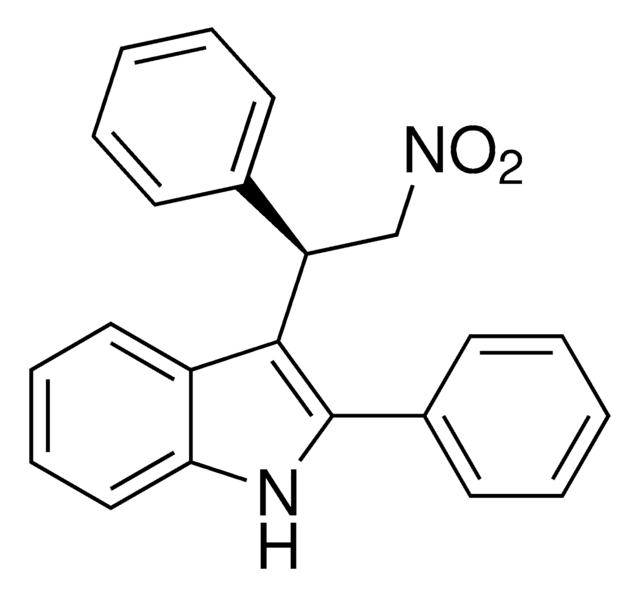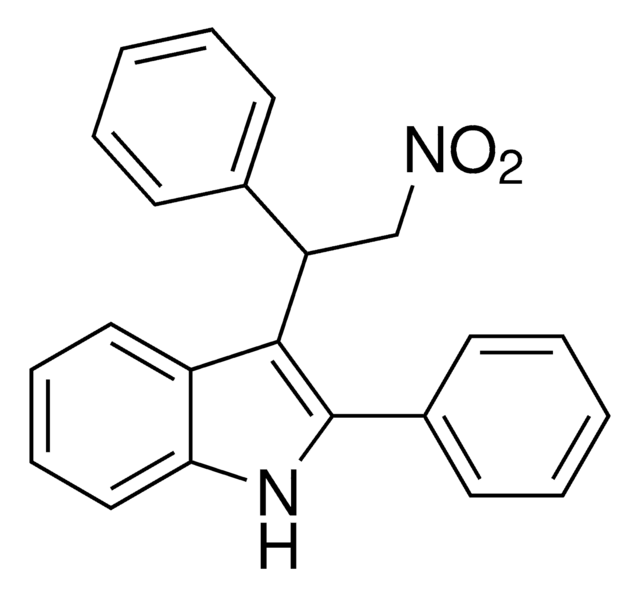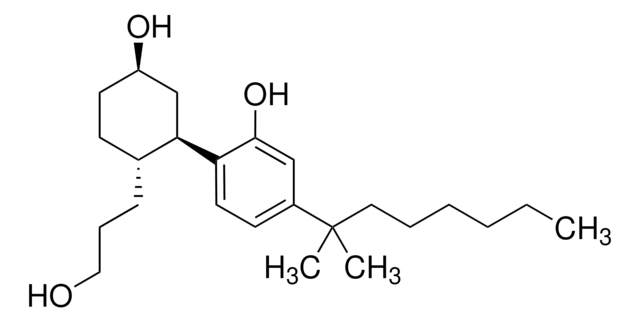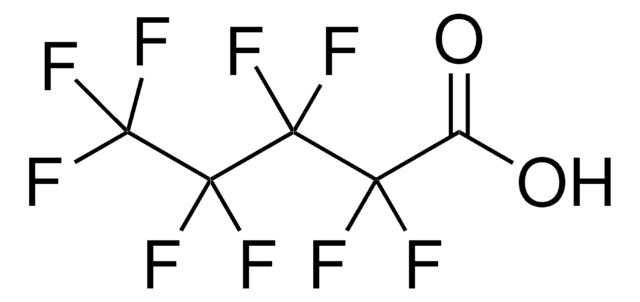SML1951
GAT229
≥98% (HPLC)
Synonym(s):
S-(-)-3-(2-Nitro-1-phenylethyl)-2-phenyl-1H-indole
Sign Into View Organizational & Contract Pricing
All Photos(1)
About This Item
Empirical Formula (Hill Notation):
C22H18N2O2
CAS Number:
Molecular Weight:
342.39
UNSPSC Code:
12352200
NACRES:
NA.77
Recommended Products
Assay
≥98% (HPLC)
form
powder
optical activity
[α]/D -80 to -94°, c = 1 in methanol
color
white to beige
solubility
DMSO: 20 mg/mL, clear
storage temp.
2-8°C
Biochem/physiol Actions
GAT229 is the S-(-)-enantiomer of GAT211, a positive allosteric modulator (PAM) of cannabinoid CB1 receptor signaling that was found to amplify the therapeutic effect of endocannabinoids without the negative side effects of psychoactivity or tolerance. GAT229 was found to be a potent, Gαi/o-biased CB1 PAM without intrinsic activity, while the R-(+)-enantiomer, GAT228, was found to be an unbiased CB1 allosteric agonist. In radioligand binding assays, both GAT228 and GAT229 behaved as PAMs of orthosteric ligand binding, with GAT229 exhibiting higher potency and efficacy. Allosteric CB1R activation by GAT211 and its enantiomers could be a better therapeutic strategy for enhancing endogenous cannabinergic activity than targeting endocannabinoid-degrading enzymes with small-molecule inhibitors, with a lower likelihood of tolerance and dependence.
Storage Class Code
11 - Combustible Solids
WGK
WGK 3
Flash Point(F)
Not applicable
Flash Point(C)
Not applicable
Certificates of Analysis (COA)
Search for Certificates of Analysis (COA) by entering the products Lot/Batch Number. Lot and Batch Numbers can be found on a product’s label following the words ‘Lot’ or ‘Batch’.
Already Own This Product?
Find documentation for the products that you have recently purchased in the Document Library.
Robert B Laprairie et al.
ACS chemical neuroscience, 8(6), 1188-1203 (2017-01-20)
The cannabinoid 1 receptor (CB1R) is one of the most widely expressed metabotropic G protein-coupled receptors in brain, and its participation in various (patho)physiological processes has made CB1R activation a viable therapeutic modality. Adverse psychotropic effects limit the clinical utility
Our team of scientists has experience in all areas of research including Life Science, Material Science, Chemical Synthesis, Chromatography, Analytical and many others.
Contact Technical Service








